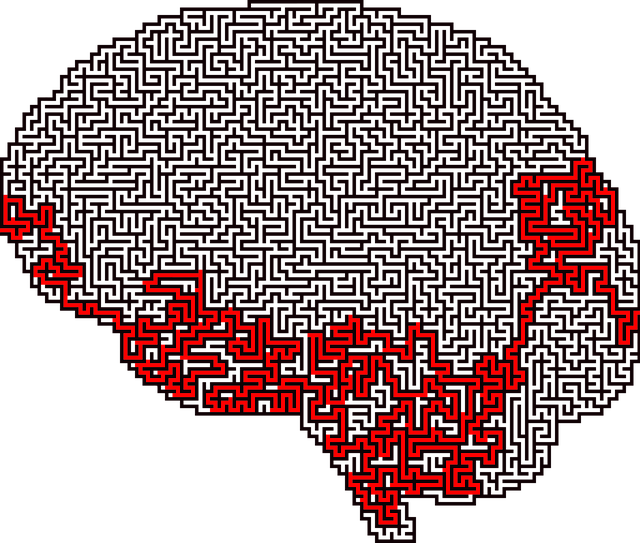Therapy-Focused Public Awareness: Crisis Counseling for Children’s Mental Health
Integrating Therapy for Children Crisis Counseling into public awareness campaigns addresses mental…….
In the intricate landscape of mental health support, Therapy for Children Crisis Counseling stands as a specialized field dedicated to addressing the unique needs of young individuals facing severe emotional distress or crisis. This therapeutic approach is designed to help children navigate tumultuous situations, providing them with essential coping mechanisms and resilience-building tools. As the demand for mental health services continues to rise globally, understanding and enhancing crisis counseling for children becomes increasingly vital. This comprehensive article aims to explore every facet of this critical field, offering insights into its definition, historical evolution, global reach, economic implications, technological innovations, policy framework, challenges, successful implementations, and future prospects. By delving into these aspects, we can better equip professionals and caregivers to support children during crises and foster their overall well-being.
Therapy for Children Crisis Counseling is a specialized form of psychological intervention tailored to assist children aged 3 to 18 who are experiencing acute emotional or mental health crises, such as trauma, abuse, loss, or severe stress. It involves a range of evidence-based techniques aimed at helping young individuals process their emotions, develop adaptive coping strategies, and regain a sense of safety and stability. The core components of this therapy typically include:
The concept of children’s crisis counseling has evolved over time, influenced by advancements in psychology and mental health research. Its roots can be traced back to the early 20th century when pioneers in child psychology began recognizing the importance of addressing emotional crises in young individuals. The field gained momentum in the 1970s and 1980s with the development of structured therapeutic models tailored specifically for children.
One of the significant milestones was the integration of cognitive-behavioral therapy (CBT) into crisis counseling, which provided a more focused and evidence-based approach. The 1990s saw an expansion in research, leading to a better understanding of trauma’s impact on children and the development of specialized interventions for complex trauma. In recent years, advancements in technology have opened new avenues for delivering crisis counseling, including online therapy platforms and mobile applications.
The significance of Therapy for Children Crisis Counseling lies in its ability to:
This therapy is integral to various settings, including schools, hospitals, community clinics, and specialized treatment centers, catering to diverse populations and needs.
Therapy for Children Crisis Counseling has gained global recognition and adoption, with countries worldwide implementing specialized programs and integrating these services into their healthcare systems. The World Health Organization (WHO) has emphasized the importance of mental health services for children and adolescents, encouraging countries to strengthen their capacity in this area.
The implementation and approach to crisis counseling vary across regions, influenced by cultural, socioeconomic, and political factors:
The global market for children’s mental health services is experiencing significant growth, driven by increasing awareness, rising healthcare expenditure, and improving access to care. According to a 2021 report by Grand View Research, the global children’s mental health market size was valued at USD 15.3 billion in 2020 and is expected to grow at a compound annual growth rate (CAGR) of 7.8% from 2021 to 2028.
The children’s crisis counseling market is characterized by:
Investments in this sector are primarily driven by:
While the economic potential is promising, several challenges hinder the growth and effectiveness of Therapy for Children Crisis Counseling:
The digital age has revolutionized therapy delivery, offering new avenues for reaching children in need:
Technological innovations in crisis counseling have led to:
In the future, technology is expected to play an even more pivotal role in:
The development and delivery of Therapy for Children Crisis Counseling are guided by various policies and regulations worldwide:
Policy frameworks play a crucial role in shaping the field by:
Despite its benefits, Therapy for Children Crisis Counseling faces several challenges:
Criticisms of the current landscape include:
To address these challenges, the following strategies can be implemented:
A public school district in the USA implemented a comprehensive crisis counseling program tailored to address the increasing rates of anxiety and depression among students. The program included individual therapy sessions, group support, and crisis intervention training for teachers. Results showed significant improvements in student well-being, with a 25% reduction in disciplinary incidents related to mental health issues over two years. This success led to district-wide expansion and recognition as a model program by the state education department.
In a rural region of Kenya, a non-profit organization developed a community-based approach to trauma healing, focusing on traditional healing practices alongside Western psychotherapy. The program involved training local healers and community leaders in trauma-informed care, enabling them to provide support to peers. This collaborative model not only addressed individual trauma but also fostered community resilience, leading to improved social cohesion and reduced post-traumatic stress disorder (PTSD) symptoms.
An Australian startup created a mobile app offering digital therapy programs for adolescents struggling with anxiety and depression. The app provides personalized therapeutic tools, guided meditations, and access to virtual counselors. Initial studies showed positive outcomes, with participating teens reporting improved mood and reduced symptoms. This case highlights the potential of digital tools in reaching young people who may be reluctant to engage in traditional therapy.
The future of Therapy for Children Crisis Counseling holds immense promise, with several growth areas emerging:
Several emerging trends shape the future of this field:
To capitalize on these future prospects, professionals and policymakers should:
Therapy for Children Crisis Counseling is a vital component of ensuring the well-being and resilience of young individuals. With growing awareness, technological advancements, and a better understanding of effective practices, the field is poised for significant progress. Addressing challenges through strategic initiatives, policy advocacy, and continued professional development will be crucial in meeting the evolving needs of children in crisis. As the global community invests in this vital service, we can expect to see improved access, enhanced therapeutic outcomes, and brighter futures for children worldwide.

Integrating Therapy for Children Crisis Counseling into public awareness campaigns addresses mental…….